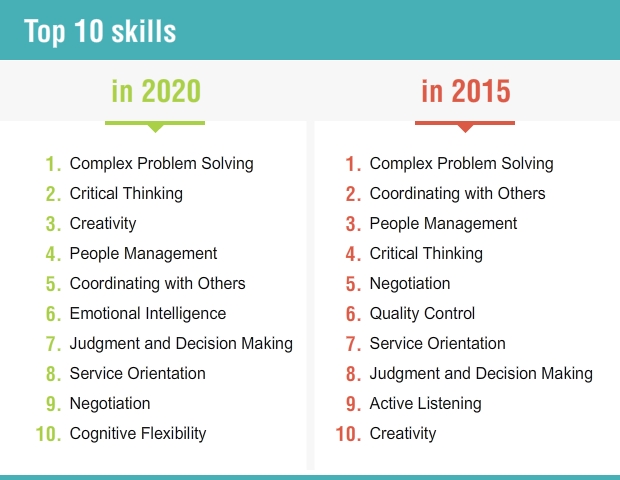Let me tell you the true story of three companies…
The first company is one of a large group of companies. This company competes in a segment that has remarkable potential, making this company significant for the entire group’s profitability. To capitalise on the opportunity, the group has defined a strategic shift for this company, from order fulfilment to sales generation. It’s a clear, logical change but with huge significance for the sales team. Their activities, their KRAs, their very day-to-day routines – all have to change to deliver on this new direction. The company has considered making a module explaining the new strategy and what the expectations are of the sales team after this change. The sales team is also to be trained on the new processes. The sales team is expected to show initiative.
The second company is a giant in providing support services to other organisations. Let’s think of them as SupportGiant. SupportGiant has truly exceptional clarity in their corporate discourse. They absolutely do not do vague, aspirational yet unfocussed missions. They articulate excellently and clearly, even down to annual reports and whitepapers. They have a superbly clear idea of what differentiates them in the market, what positioning they wish to deliberately develop. They have developed modules to explain the behaviours necessary to maintain this positioning. The modules are rich in examples and scenarios. The service delivery team is expected to show design thinking ability in creating experiences for customers.
The third company has been introspecting. They have seen some tough financial times, and as part of an effort to streamline the group’s efforts, they have launched a role to make internal operations more productive. The role in fact only serves internal customers, but they make sure that the inter-departmental co-ordination exists. The hard financial times faced earlier were seen as significantly attributable to lack of coordination. So this new role? It’s critical. The new role is required to do strategic thinking, creative problem solving and engage stakeholders. Various tools, frameworks and methodologies have been created and taught to help the people in this role deliver. It was assumed that as only senior profile employees would be appointed to the role, they wouldn’t need basic training for domain knowledge or the assumed skill set.
Do you see where this is going? All the organisations have invested seriously in teaching the content to support new, even cultural level changes in the internal climate. Not one has addressed how to develop domain-independent, higher order skills – which they nonetheless expect their employees to exhibit! These are even aspects of organisational ability (not just individual ability) that are often quietly overlooked. Such skills (perseverance, innovation, design thinking, creativity, problem solving) are just mentioned in passing at the time of performance appraisals and similarly briefly referenced when writing about the organisation. Very few companies actually bother creating programs to scaffold or plan for long-term development and honing of these skills. But wait, these skills…. are they really so much in demand? Oh, don’t take my word for it – here you go, an authoritative source:
 Source: World Economic Forum
Source: World Economic Forum
As even a ‘good’ employee, to be suddenly held accountable for such standards is daunting. It’s challenging even without being accompanied by new processes or ways of working to learn. Let’s take a sincere employee ‘A’ and a talented employee ‘B’. A and B are peers performing the same task, but B manages to thrill the manager while A simply meets expectations. A and B know the same necessary things about how to perform the key tasks. The difference is that B has better developed certain skills. There is typically no help for A to:
- Even understand what these skills are!
- Understand how to develop these skills
- Grasp what different levels of these skill could look like
- Exercise development of these skills and have a clear/ structured way to gauge progress
And yet typically, the organisation may have talent development plans and want, purely from a billing point of view, to grow more employees to be like B. Would a 2-day intensive classroom training do? How about a 1-month off-site? Let’s focus on immediately perceivable results shall we? – Knock off another process training. Employees get no support but the demands on them increase.
When you consider higher order skills, these are clearly domain independent (although for some of them – such as problem solving – domain knowledge can add to the skill). They go to ways of thinking and responding rather than just particular tasks or activities at the workplace. To genuinely develop and grow them, a performance intervention has to be long term, sustained, not just repetitive but in fact powerfully scaffolding. It is most definitely beyond the scope of conventional solutions like computer-based training modules.
This is where mobility could be leveraged. What were once problems/challenges become opportunities for the design: the constancy of monitoring, but with intelligent customisation to calibrate support, anytime and at anyplace – these are things that a cleverly design app can easily leverage to seriously add to skill development.
Mobility can be leveraged at various levels of design intelligence: basic ‘constant availability’ can be just as look up material always and anywhere accessible on a mobile device to personal and personalised tracking, intelligent coaching and long-term development.
So, anyone interested in doing something long term?



















